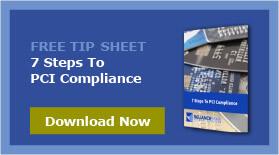The Ultimate Guide to Merchant Cash Advances

As an entrepreneur, you have many options when it comes to obtaining additional funding to help grow your small business. Many businesses choose to go the traditional route by obtaining a business loan from a bank or private lender. However, you also have another option: merchant cash advance. Here’s what you need to know about this funding method.
Differences Between a Merchant Cash Advance and a Traditional Loan
The key difference between a merchant cash advance and a traditional loan is that, with a cash advance, you are borrowing the money against the future credit card receipts in your merchant account. As your business receives credit card payments going forward, a specified percentage, typically 5-20 percent, will go towards repaying the amount owed, so your payments will vary in accordance with your business’ sales each month. You’ll also be charged an additional fee, called the factor rate, which typically amounts to about 10-50 percent of the original advance amount.
With a traditional loan, you’ll have to pay a fixed amount each month until the loan is paid off, regardless of the income your business generates. You’ll also pay interest on the amount owed until it is repaid.
Benefits of Merchant Cash Advance
The repayment structure offers one of the biggest benefits of using a merchant cash advance. If your business has a slow month, your repayment amount will be much smaller. If your business starts to grow and is bringing in larger revenues, you’ll have the advance paid back much faster. This way, your business won’t be under undue strain in the event that sales are lower in a particular month.
On the contrary, a traditional loan would require you to make the same monthly payment, even if the business is slow for a month, making it difficult to make the payment. Furthermore, cash advances don’t require collateral, so you won’t have to run the risk of losing your business if you go through a temporary slow period and cannot repay the loan. You don’t get this kind of security with a traditional loan that is backed by collateral.
Cash advances also tend to be easier to qualify for than traditional loans. This is because a bank will likely only look at your business’ credit score. If you are just starting out and do not have much of a credit history, you may not be able to obtain a business loan from a bank. Similarly, if your organization has had financial troubles with creditors in the past, hurting your credit score, you will have difficulty obtaining additional funding.
With a cash advance, the amount you are able to borrow is based on your last three to six months of credit card receipts, making it easier to obtain funding for younger businesses that are just starting to grow. Because they are based on your business’ sales, you may also be able to obtain much higher amounts than you could with a traditional loan, giving your business greater flexibility in being able to expand and grow.
Making the Decision to Use a Merchant Cash Advance
Obtaining additional funding to grow your business is a major decision, so you’ll need to carefully weigh your options before choosing which route to take. As with any type of financing, make sure that you fully understand the specific terms of a merchant cash advance agreement before signing anything. Each advance will have its own unique requirements and restrictions, so it is crucial that you understand what you are getting yourself into. With proper research and planning, this can be a great option to help you take your business to the next level.



